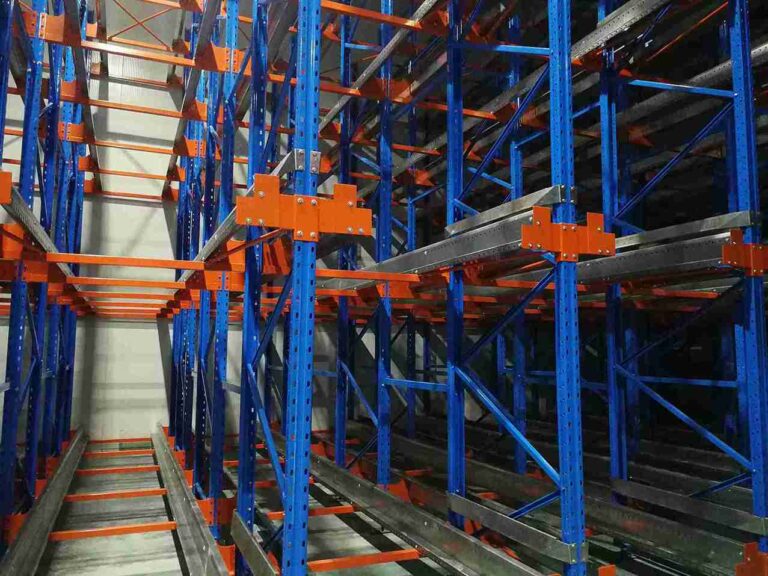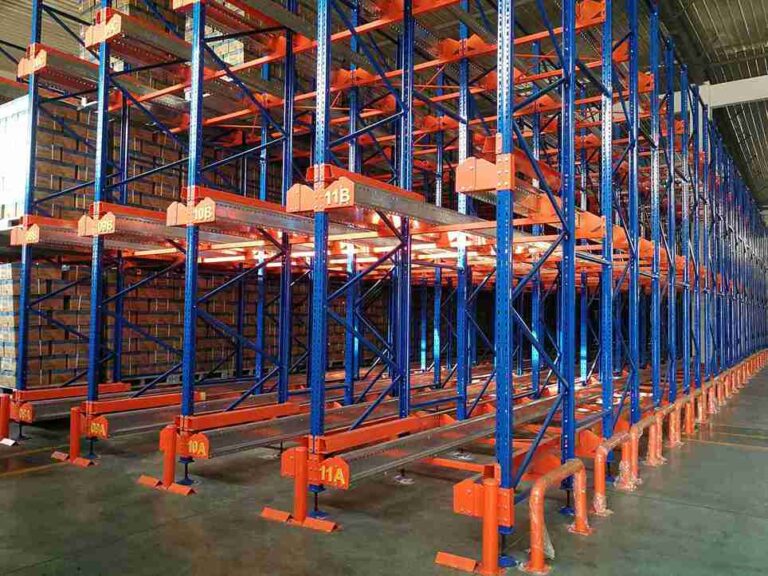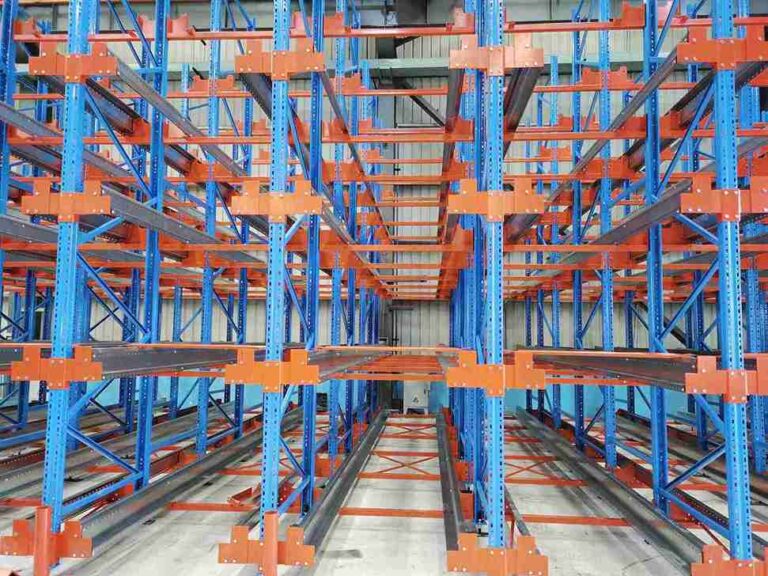📐 "First 50 Enterprise Queries Get Custom 3D Warehouse Design" Plan
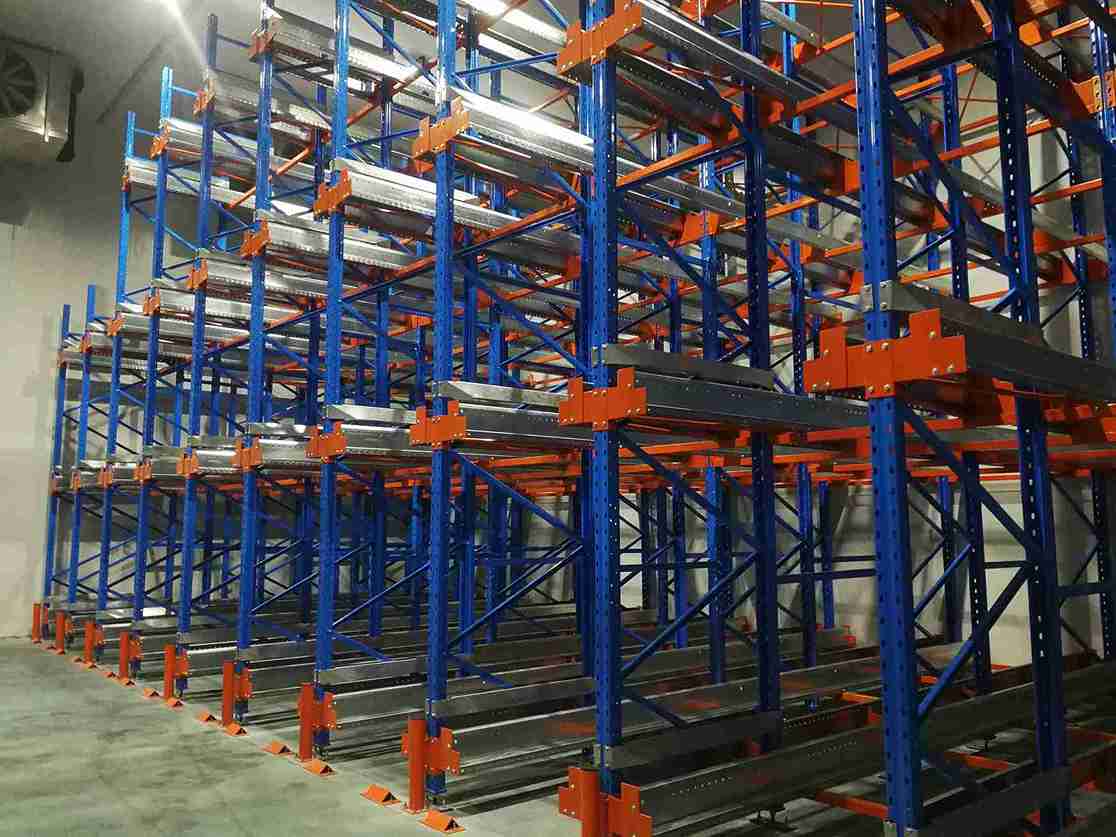
In the relentless pursuit of logistical superiority, warehouse operators face a dual-fronted challenge: the escalating value of real estate and the rising, unpredictable costs associated with labor. This comprehensive analysis positions fully automated shuttle racking as a transformative solution, moving beyond incremental improvement to a fundamental re-engineering of storage paradigms. This article provides a detailed examination of the engineering principles that enable unprecedented storage density, a forensic breakdown of the mechanisms driving profound labor cost reduction, and a strategic framework for evaluating Return on Investment (ROI).
We will delve into the critical synergy between advanced hardware and intelligent software—specifically Warehouse Management Systems (WMS) and Warehouse Control Systems (WCS)—that defines a successful fully automated shuttle racking implementation. For decision-makers in e-commerce, cold storage, and manufacturing, this technology represents a strategic imperative for building a resilient, scalable, and cost-effective operation. This resource is designed to equip industry professionals with the depth of knowledge required to make informed, confident investment decisions.
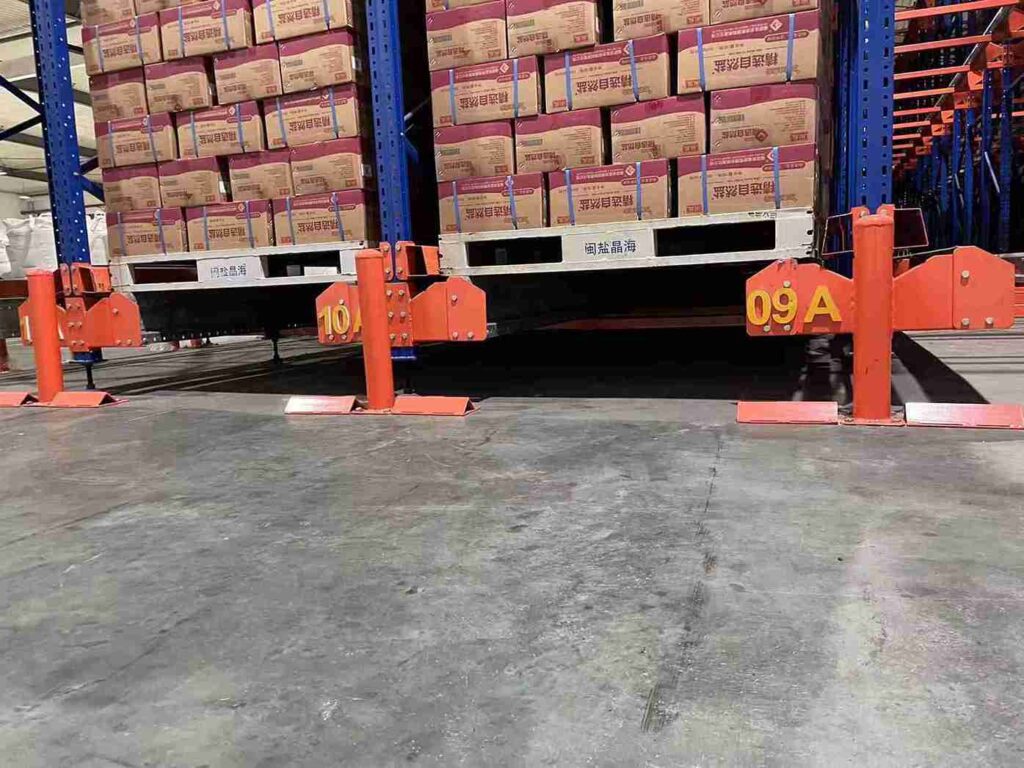
H2: The Contemporary Warehouse Imperative: Confronting Spatial and Labor Inefficiencies
The traditional warehouse model is fundamentally strained by the demands of modern supply chains. The exponential growth of e-commerce and omnichannel retail has necessitated a shift from pallet-in, pallet-out operations to intricate case-picking and individual item fulfillment. This evolution requires housing a vastly expanded number of SKUs within a finite footprint. Concurrently, the global labor market presents persistent challenges in recruiting, training, and retaining qualified material handling personnel.
Fluctuations in productivity and absenteeism directly impact throughput and operational consistency. Conventional selective racking, while a longstanding industry workhorse, inherently contributes to this inefficiency. The wide aisles required for forklift maneuverability represent significant tracts of unproductive space—a substantial capital outlay in terms of rent, utilities, and maintenance that generates no direct revenue. This is the core dilemma: operational expenditures are climbing while usable storage density remains static.
The resolution necessitates a paradigm shift from passive storage to active, intelligent inventory management, a transition masterfully enabled by fully automated shuttle racking.
H2: A Technical Dissection of Fully Automated Shuttle Racking Architecture
Understanding the superior performance of a fully automated shuttle racking system begins with a thorough deconstruction of its core components. This system is an integrated ecosystem of precision hardware and sophisticated software, working in concert to achieve operational excellence.
The Racking Superstructure: This is not standard pallet racking. It is a custom-engineered, high-rise structure, often based on drive-in or cantilever racking principles but designed for significantly greater height and load-bearing capacity. It consists of multiple tiers of rails within deep storage lanes, forming the physical framework for the fully automated shuttle racking system.
The Autonomous Shuttle Vehicle: This is the centerpiece of the operation. It is a compact, battery-powered robotic device that operates on a single level within the racking, traveling horizontally to store and retrieve pallets or bins. The fully automated shuttle is deployed and retrieved by a peripheral lift mechanism, functioning with pinpoint accuracy.
The Vertical Lift Module: Positioned at the face of the racking, this electromechanical lift is responsible for the vertical movement of pallets and shuttles. It places the fully automated shuttle onto the designated level and facilitates the transfer of unit loads between the shuttle and the integrated conveyor system.
The Conveyor and Transfer System: This network serves as the circulatory system, seamlessly transporting pallets from the lift module to the pickup and deposit (P&D) stations, effectively linking the high-density fully automated shuttle racking to the wider warehouse workflow.
The Integrated Control Software (WMS/WCS): This is the cognitive center of the operation. A high-level Warehouse Management System (WMS) issues commands, while a dedicated Warehouse Control System (WCS) executes real-time directives, orchestrating the synchronized movement of lifts, shuttles, and conveyors. The intelligence of this software is what elevates a fully automated shuttle racking system from a mere storage solution to a dynamic inventory management platform.
H2: Engineering Maximum Storage Density: The Spatial Economics of Fully Automated Shuttle Racking
The primary advantage of implementing a fully automated shuttle racking system is its radical enhancement of storage density. This is achieved through several foundational engineering principles.
H3: Aisle Elimination: Reclaiming Precious Square Footage
In a conventional selective racking layout, aisles can consume over 50% of the total floor space. A fully automated shuttle racking system operates on a “goods-to-person” principle, necessitating only a single front-access aisle for the lift mechanism. The deep storage lanes themselves are aisle-free, allowing for a dramatic consolidation of pallet positions. This design effectively reclaims thousands of square feet of valuable real estate, either enabling more inventory to be stored within the existing facility or allowing for the same capacity in a smaller, less expensive building.
H3: Vertical Optimization: Capitalizing on Cubic Capacity
Warehouses are volumetric assets, yet their vertical space is often underutilized due to the limitations of manned forklifts. A fully automated shuttle racking system is engineered to exploit the full clear height of a facility, safely reaching elevations of 100 feet or more. Since the fully automated shuttle operates robotically within the rack structure, human operator safety constraints are removed. This allows for high-density storage from the floor to the ceiling, transforming previously inefficient air space into high-value inventory capacity.
H3: Deep-Lane Storage and Dynamic Slotting Algorithms
The fully automated shuttle racking system is inherently designed for deep-lane storage, with single lanes often holding 20 or more pallets in depth. The system’s intelligence lies in its dynamic slotting capability. Unlike traditional systems where rear pallets are difficult to access (a phenomenon known as the “Last-In, First-Out” or LIFO bottleneck), the fully automated shuttle can retrieve any pallet within the lane with equal speed. The advanced WCS software continuously optimizes inventory placement based on turnover rates, ensuring that the system’s throughput is maximized without being constrained by physical pallet location.
H2: The Labor Cost Equation: Quantifying Operational Savings with Fully Automated Shuttle Racking
While spatial efficiency is a compelling benefit, the significant reduction in labor costs is frequently the most decisive factor for adopting fully automated shuttle racking. This technology directly addresses the core vulnerabilities of a human-dependent workforce.
H3: Reduction in Direct Labor and Associated Overheads
A single fully automated shuttle racking system can displace multiple forklifts and their operators. The tasks of put-away, internal replenishment, and order retrieval are executed entirely by the automated system. This transition results in a smaller, more highly skilled workforce focused on system management, exception handling, and value-added tasks rather than repetitive material movement. The financial impact extends beyond direct wages to encompass substantial savings on benefits, payroll taxes, insurance, and the administrative burden of managing a large labor pool.
H3: Uninterrupted 24/7 Operational Capability
Human labor is bound by shifts, breaks, and fatigue. A fully automated shuttle racking system is not. It can operate consistently and accurately around the clock. This “lights-out” operational capability allows for unparalleled flexibility. Inventory cycles, replenishment tasks, and order preparation can be conducted during off-hours, maximizing throughput without increasing labor headcount and providing a decisive competitive advantage during peak demand periods.
H3: Enhanced Safety and Asset Protection
Forklift operations are a leading cause of workplace accidents and product damage in warehouses. By removing manned vehicles from the high-density storage environment, a fully automated shuttle racking system eliminates a major source of risk. The robotic shuttles operate with millimeter precision, drastically reducing incidents of rack impact, pallet collision, and load dropping. This leads to a safer work environment, lower insurance premiums, and a significant reduction in product loss due to handling damage.
H2: The Intelligence Layer: Software’s Pivotal Role in Fully Automated Shuttle Racking
The physical infrastructure of a fully automated shuttle racking system is only half of the equation. The software that controls it is what unlocks its full potential, transforming it from a static storage unit into a dynamic, intelligent hub.
H3: Warehouse Management System (WMS) Integration
The enterprise WMS (e.g., SAP EWM, Oracle WMS, Blue Yonder) remains the strategic brain for inventory control, order management, and analytics. A properly integrated fully automated shuttle racking system acts as a high-speed, high-density execution arm for the WMS. When an order is received, the WMS identifies the required item and its location within the fully automated shuttle racking and issues a retrieval command. This seamless data exchange is critical for maintaining perfect inventory accuracy.
H3: The Warehouse Control System (WCS): The Real-Time Operational Conductor
The WCS is the tactical nerve center. It translates high-level commands from the WMS into a precise sequence of real-time instructions for the automated equipment. The WCS manages the traffic of shuttles and lifts, prioritizes tasks for optimal throughput, and provides continuous system monitoring and diagnostics. The sophistication of the WCS is a key differentiator in the performance and reliability of a fully automated shuttle racking installation.
H3: Data Analytics for Predictive Optimization
Modern fully automated shuttle racking systems are generative; they produce vast amounts of operational data. Advanced analytics platforms can process this data to provide insights for predictive maintenance, identify bottlenecks, and suggest continuous improvement initiatives, such as re-optimizing slotting strategies based on seasonal demand shifts. This transforms the fully automated shuttle racking system from a cost center into a source of strategic business intelligence.
H2: Calculating the Return on Investment (ROI) for Fully Automated Shuttle Racking
Justifying the capital expenditure for a fully automated shuttle racking system requires a rigorous and comprehensive ROI analysis that looks beyond initial purchase price to Total Cost of Ownership (TCO).
H3: Constructing a Comprehensive Financial Model
A robust ROI model for a fully automated shuttle racking project must account for both quantitative and qualitative factors:
Real Estate Savings: Quantify the value of reclaimed floor space. Can a facility expansion be deferred? Can existing space be repurposed for value-added services?
Labor Cost Reduction: Model the full financial impact of reduced forklift operator headcount, including wages, benefits, and administrative overhead.
Throughput Enhancement: Assign a monetary value to increased order fulfillment capacity and the ability to handle demand peaks without temporary labor.
Accuracy and Damage Mitigation: Calculate the cost savings from reduced shipping errors, returns, and inventory shrinkage.
Energy and Maintenance: Compare the predictable energy consumption and maintenance schedules of an automated system with the volatile costs of maintaining a fleet of forklifts.
H3: Illustrative ROI Scenario
Consider a distribution center with an annual labor cost of $750,000 for activities that would be automated by a fully automated shuttle racking system. For a system costing $3 million with annual maintenance of $100,000, the simple payback period would be approximately 4.6 years [$3M / ($750k – $100k)]. When incorporating real estate savings, damage reduction, and throughput gains, the payback period often shortens to a highly compelling 2.5 to 3.5 years, solidifying the business case for fully automated shuttle racking.
H2: Strategic Applications: Where Fully Automated Shuttle Racking Delivers Dominant Value
While a powerful technology, fully automated shuttle racking yields maximum ROI in specific operational contexts characterized by high SKU counts, space constraints, and labor intensity.
H3: E-Commerce and Omnichannel Fulfillment Centers
This is an ideal application. The need for high-density storage of thousands of SKUs with volatile demand profiles aligns perfectly with the strengths of fully automated shuttle racking. Its ability to perform high-speed, accurate order sequencing and batch picking is invaluable in this fast-paced environment.
H3: Temperature-Controlled Cold Storage Facilities
The capital and operational costs of refrigerated and frozen warehouses are extraordinarily high. Maximizing storage density is therefore paramount. Furthermore, automating processes in sub-zero environments enhances worker safety and comfort. The reliability of fully automated shuttle racking in these harsh conditions provides a formidable advantage.
H3: Manufacturing and Production Buffer Storage
For manufacturers employing Just-in-Time (JIT) or Lean principles, fully automated shuttle racking provides perfectly organized and highly accessible buffer storage for raw materials, work-in-progress, and finished goods. It ensures the timely delivery of components to production lines, minimizing downtime and supporting manufacturing efficiency.
H2: The Partner Selection Process: Critical Considerations for Fully Automated Shuttle Racking Implementation
Selecting a technology provider for a fully automated shuttle racking system is a strategic decision that extends beyond the initial sale. Key evaluation criteria include:
Proven Industry Expertise: Demand case studies and client references from projects with similar scope, industry, and operational challenges.
Software Capability and Integration Maturity: Scrutinize the WCS’s user interface, reporting capabilities, and the proven ease of integration with leading WMS platforms.
Global Service and Support Infrastructure: Evaluate the provider’s response time, availability of spare parts, and the expertise of their technical support team, both during implementation and throughout the system’s lifecycle.
System Scalability and Future-Proofing: Ensure the fully automated shuttle racking design can be cost-effectively expanded or reconfigured to accommodate future business growth.
H2: Conclusion: Positioning for the Future with Fully Automated Shuttle Racking
The trajectory of modern logistics is unequivocally toward greater automation, density, and intelligence. Fully automated shuttle racking represents a mature, proven, and highly effective technology that directly confronts the most significant cost drivers in warehousing: space and labor.
The decision to implement a fully automated shuttle racking system is a strategic investment in operational resilience, scalability, and competitive advantage. By meticulously planning the integration, prioritizing software intelligence, and partnering with a reputable supplier, organizations can transform their storage operations into a robust, future-ready asset capable of thriving in the dynamic landscape of global supply chains.
H2: Frequently Asked Questions (FAQs)
H3: 1. How does a fully automated shuttle racking system handle power failures or unexpected downtime?
Fully automated shuttle racking systems are engineered with redundancy and fail-safe mechanisms. The shuttle vehicles are equipped with onboard batteries that provide sufficient power to complete active cycles and return to their designated home positions in the event of a power outage. The control software features comprehensive data backup and recovery protocols to ensure zero data loss. Furthermore, planned maintenance windows are utilized for system updates to minimize unplanned operational interruptions.
H3: 2. What is the typical project timeline for a large-scale fully automated shuttle racking installation?
The lead time for a significant fully automated shuttle racking project can vary based on scope, complexity, and supply chain conditions. Generally, the process—encompassing detailed design, engineering, manufacturing, shipping, and on-site installation—can range from 8 to 14 months. A critical success factor is a detailed project plan with clearly defined milestones provided by the supplier.
H3: 3. Can a fully automated shuttle racking system be integrated with other automation technologies like AMRs or sorters?
Absolutely. In fact, maximum operational efficiency is often achieved through such integration. A fully automated shuttle racking system acts as the high-density storage engine, seamlessly interfacing with Autonomous Mobile Robots (AMRs) that transport picked orders to packing stations, and with high-speed sortation systems for parcel distribution. This creates an end-to-end automated material flow from receiving to shipping.
H3: 4. What are the standard load and dimension specifications for pallets in a fully automated shuttle racking system?
Each fully automated shuttle racking system is designed with specific load capacity and pallet dimension parameters. While standard Euro (800x1200mm) and North American (48″x40″) pallets are commonly accommodated, systems can be custom-engineered for non-standard sizes and heavier loads, which is typical in industries such as beverages or building materials. This customization is a fundamental aspect of the initial design and consultation phase.
H3: 5. How does inventory counting and cycle counting function within a fully automated shuttle racking environment?
Automation brings near-perfect inventory accuracy. The software of a fully automated shuttle racking system tracks the real-time location of every single pallet. Cycle counting becomes an automated, non-disruptive process. The system can be scheduled to perform counts on specific lanes or SKU groups during off-peak hours, providing auditors with precise, reliable data and virtually eliminating the need for costly and operationally disruptive physical inventory shutdowns.
Welcome to contact us, if you need warehouse rack CAD drawings. We can provide you with warehouse rack planning and design for free. Our email address is: jili@geelyracks.com

